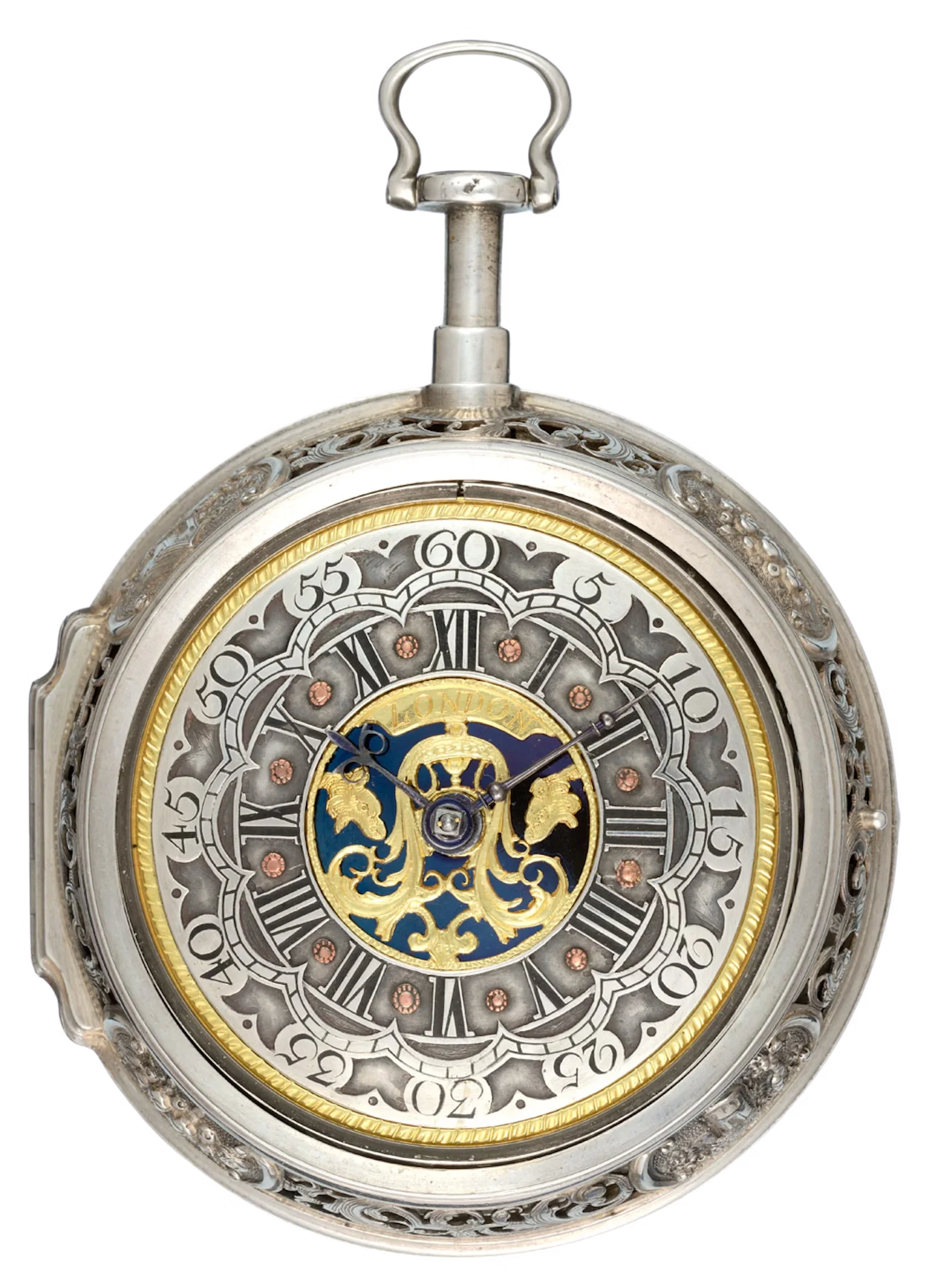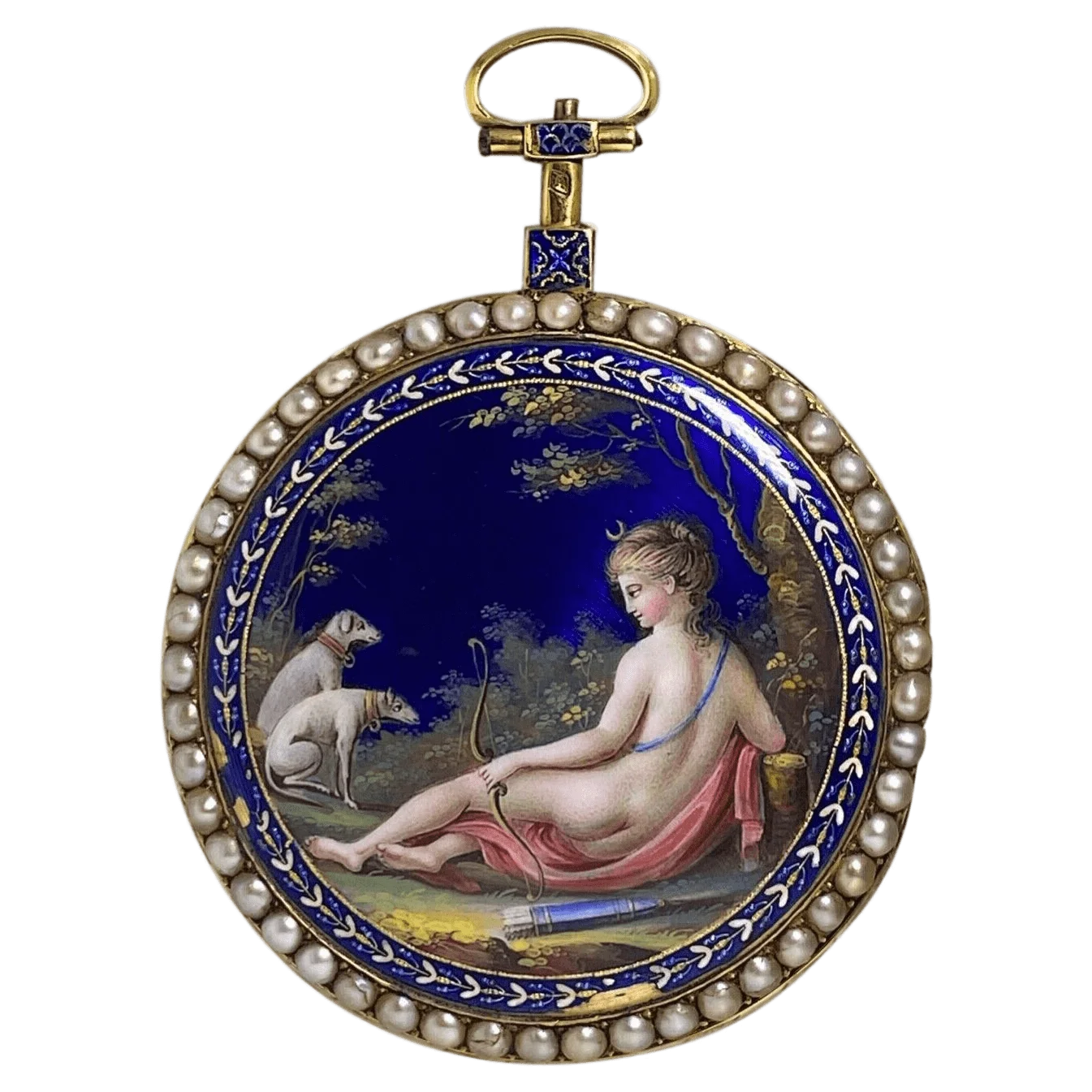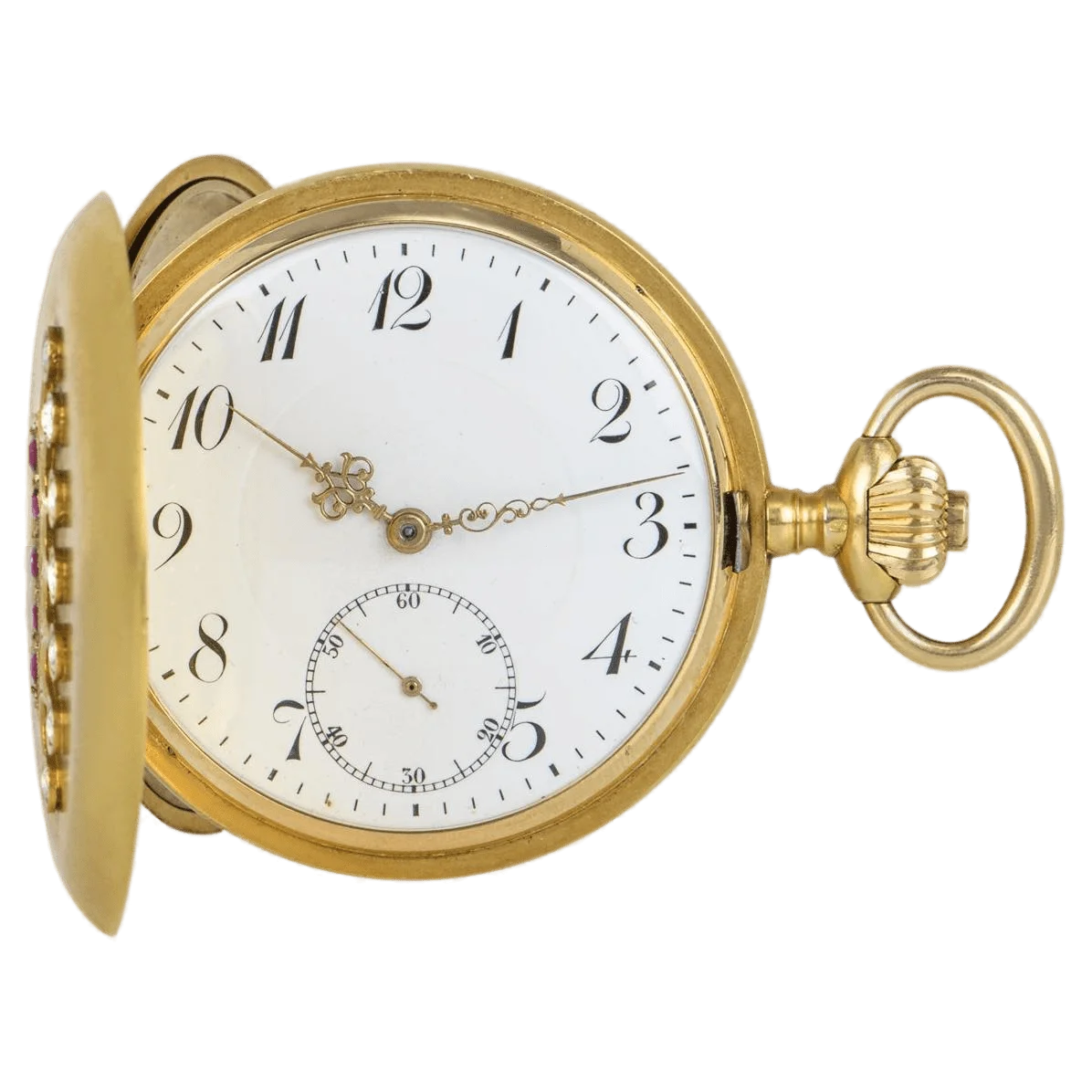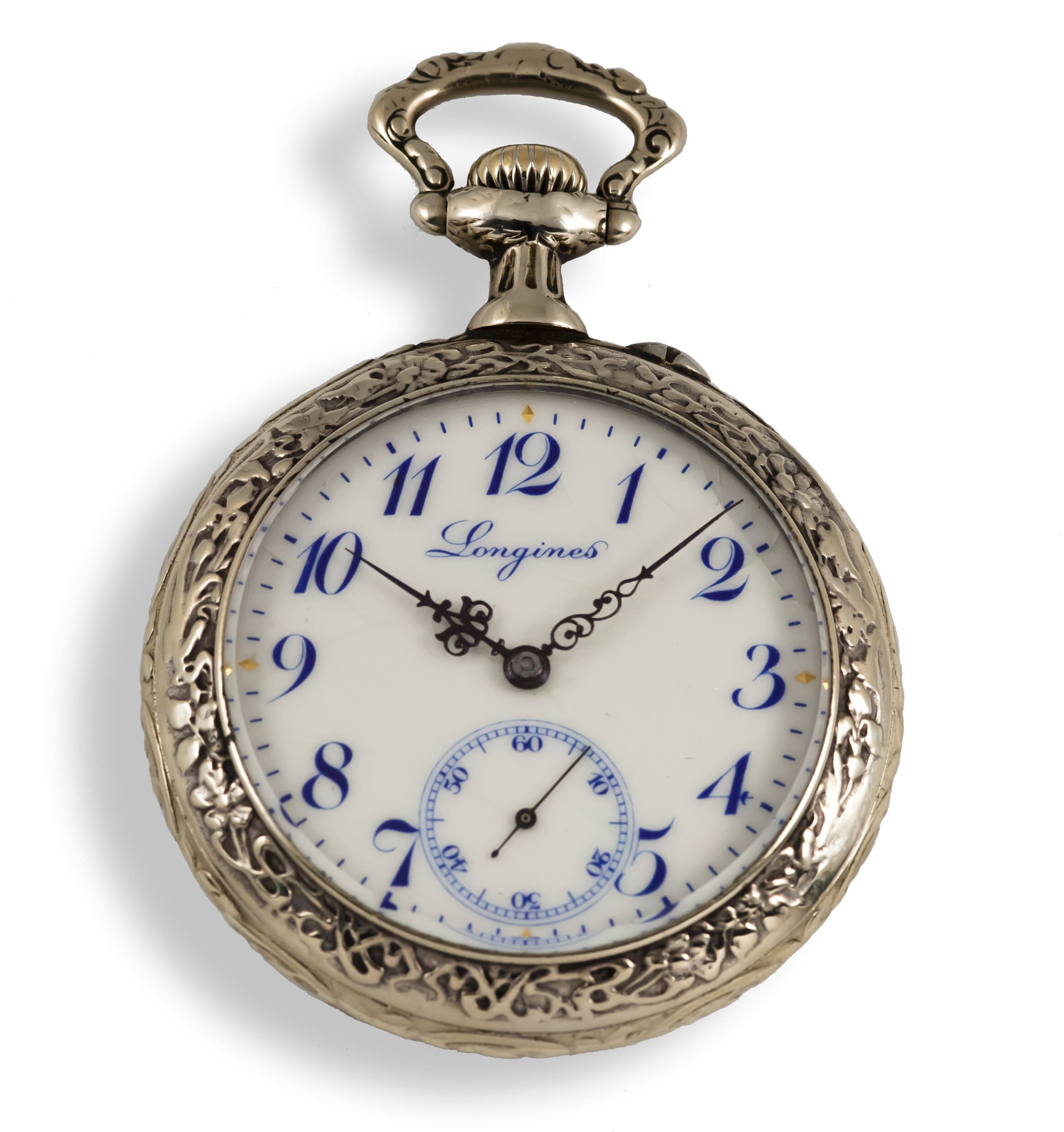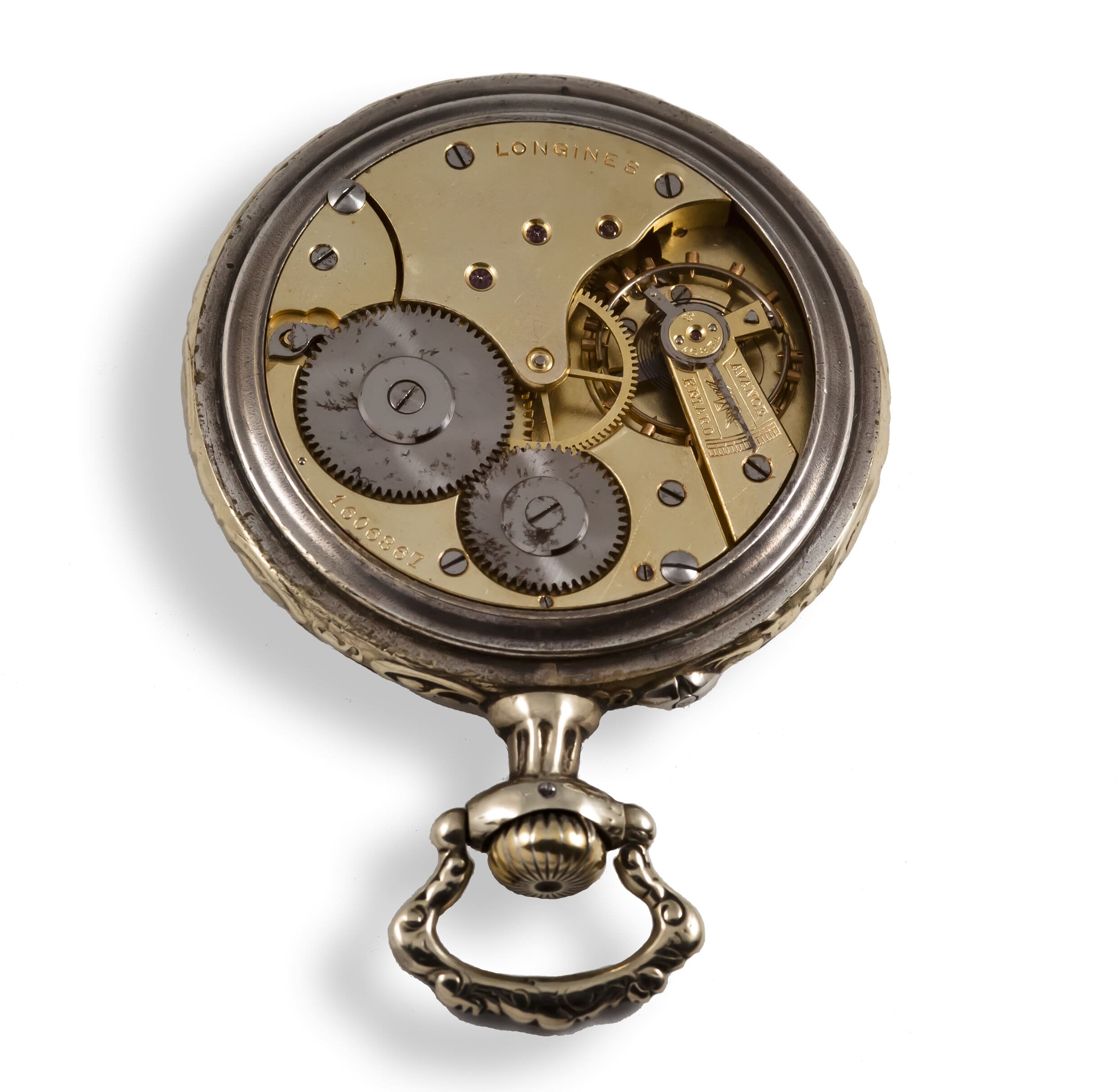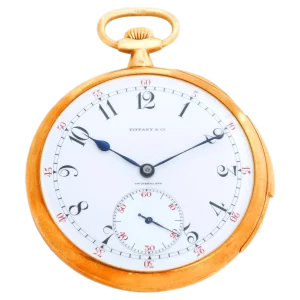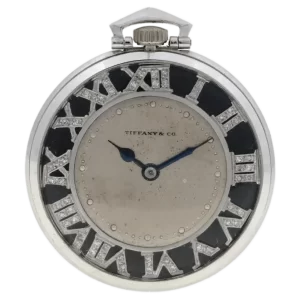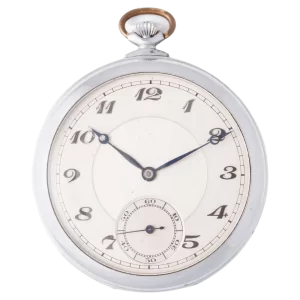Longines – 1904
SIZE OVERALL: 52.7mm (excluding Crown & Bow)
SIZE MOVEMENT: 42.8mm. US size 16
MANUFACTURED IN: St Imier, Switzerland
YEAR OF MANUFACTURE: 1904
JEWELS: 15
MOVEMENT TYPE: Three quarter plate
Out of stock
£687.50
Out of stock
Longines, a name synonymous with precision and innovation, traces its origins back to 1832 when Auguste Agassiz joined the small watchmaking firm of Raiguel Jeune & Cie. Over the years, the company underwent significant transformations, particularly under the leadership of Agassiz's nephew, Ernest Francillon. Francillon's visionary decisions, such as the exclusive production of crown-wound watches, set Longines apart from its competitors who were still focused on key-wound mechanisms. The establishment of the company's first factory in 1867 in the area known as Les Longines marked the beginning of a new era, with their in-house watch winning an award for innovation at the Universal Exhibition in Paris the same year. Recognizing the need for modernization to stay competitive with American watchmakers, technical director Jacques David's pivotal report after the 1876 World’s Fair in Philadelphia spurred Longines towards industrialization. Renowned for the quality and precision of its timepieces, Longines' chronographs and stopwatches became the gold standard in timing sporting events. The brand's legacy continued to evolve, culminating in its acquisition by the Swatch Group in 1971, a conglomerate that now includes prestigious names like Breguet, Omega, and Tissot. Longines' enduring commitment to excellence is evident in the approximately 15 million watches it produced between 1867 and 1971, solidifying its place in the annals of horological history.
In 1832 Auguste Agassiz joined the small watchmaking firm of Raiguel Jeune & Cie, which some 35 years later was to become Longines. By 1846 Agassiz was in sole ownership of the company and a few years later brought in his nephew Ernest Francillon. It was Francillon who made the company stand out from its competitors with several outstanding and radical decisions. One of the most important was the decision to make only crown wound watches while almost all other watch making companies were still concentrating on key wind and set. In 1867 the company’s first factory was established to the south of St Imier in an area known as Les Longines (the long meadows) which the company adopted as its name. By now Francillon had inherited the company and he bought in Jacques David as technical director and they produced their first completely in house watch which won an award for innovation at the 1867 Universal Exhibition in Paris.
Some years later realising that the American watch companies were moving ahead of the European competition, technically and in terms of mass production David went to the 1876 World’s Fair in Philadelphia to see what was happening in America. Upon his return he wrote a 100 page report which is considered one of the most important documents in the history of Swiss watchmaking. His conclusion was that the Swiss watch industry had to modernise and industrialise if it were to compete effectively with the watch industry in the USA. Longines became known for the quality and precision of its timepieces, Its chronographs and stop watches became the standard for timing sporting events. In 1971 Longines was bought out by a Swiss company that eventually became the Swatch Group. (The Swatch Group now own Breguet, Longines, Omega, Tissot, Glashutte & Rado amongst several others). Longines produced a total of approximately 15 million watches between 1867 and 1971.
This is an unusual and really lovely old Longines which has an almost perfect dial. That in itself is remarkable after 116 years but also a gorgeous rural scene on the back of the case with a young Lad playing the Pan Pipes for a lissome young Lady to dance to. The slightly worn heavy silver plate on the nickel base makes this Albo metal a delight.. Added to this, the watch itself works really well. You’d expect no less from Longines, of course.
OVERALL CONDITION: The watch is working well and in generally good condition.
SIZE OVERALL: 52.7mm (excluding Crown & Bow)
SIZE MOVEMENT: 42.8mm. US size 16
MANUFACTURED IN: St Imier, Switzerland
YEAR OF MANUFACTURE: 1904
JEWELS: 15
MOVEMENT TYPE: Three quarter plate
MOVEMENT CONDITION: Excellent. Stripped and ultra sound cleaned within the last 12 months. The gilding of the brass movement parts is in particularly good condition.
MOVEMENT ACCURACY: +/- 10 minutes in 24 hours
RUN TIME: 18 - 24 hours approx. on one full wind.
ESCAPEMENT: Lever
DIAL: Arabic numerals coloured blue good condition. This is a particularly beautiful dial in remarkable condition for its 116 year life. Just very slight hairlines by 2.00
CRYSTAL: Original Mineral glass bevel edge low dome crystal.
WIND: Crown Wind
SET: Pin (nail) set
CASE: Albo silver. In exceptional condition. (Albo Silver is a base of nickel with a thick layer of silver plate. The name “Albo” was registered in 1886)
CONDITION: Very good for its age.
KNOWN DEFECTS: No obvious faults.
STOCK N0: 509
There may be other faults of which I am not aware.
Old mechanical watches may have wear to component parts and may stop working for no obvious reason.

